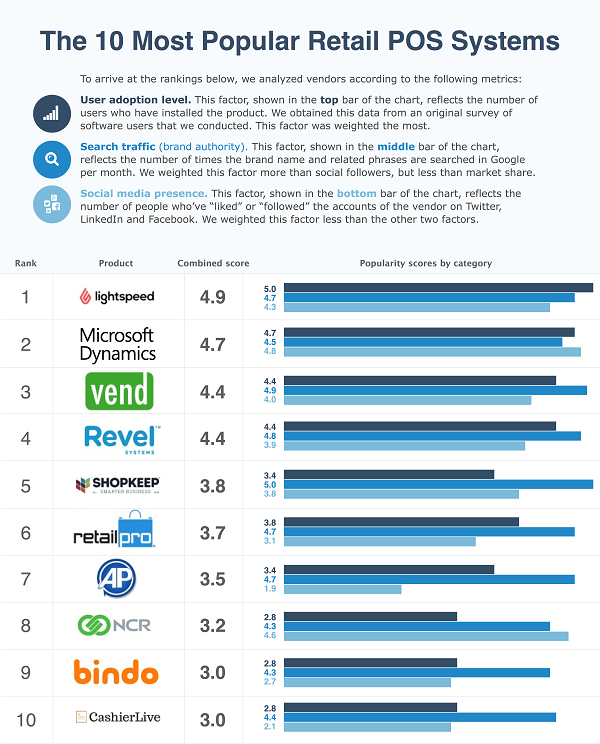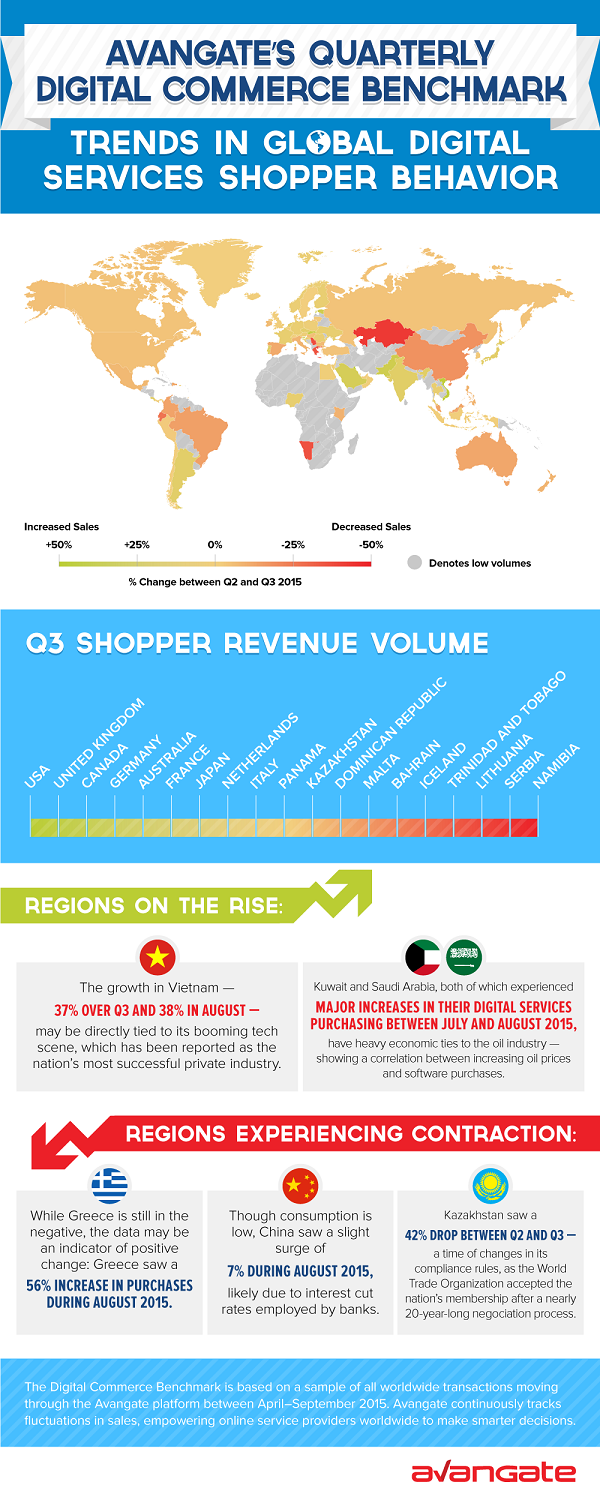12 Things Entrepreneurs Need to Know
By Rieva Lesonsky
1) Happy Halloween 2016
If you sell Halloween-related merchandise, you might consider getting an early start next year. According to a recent survey from Blue Fountain Media (conducted by Harris Poll) 66% of U.S. adults who shop for Halloween, start to do so before, or in, early October—4% actually start shopping in the summer! The earliest shoppers are young (ages 18–44) and female
Most Halloween shoppers prefer to shop in a physical store (94%), compared to online (27%) or an online-only retailer (20%), such as Amazon.com, eBay.com and Etsy.com. Virtually everyone 55+ makes their Halloween purchases in a store (99%), while of those younger than 45, 39% prefer to shop online.
If you’re an online retailer the reasons Halloween shoppers buy online include:
- Free shipping (57%)
- Wider selection of products/retailers (50%)
- Lower prices (47%)
- Time savings (46%)
- Ease of comparing prices from different online retailers (41%)
- Ease of shopping (40%)
There’s more data in the infographic below.

2) Happier Holidays
According to the National Retail Federation’s Holiday Consumer Spending Survey, consumers celebrating Christmas, Hanukkah and/or Kwanzaa will spend an average of $805.65 on food, decorations, gifts and more over the holiday season—the highest amount in the survey’s 14-year history and in line with last year’s $802.45. Spending on gifts for family members will total $462.95, up from $458.75 last year, also a survey high.
NRF President and CEO Matthew Shay says, “We expect consumers will tackle their holiday shopping lists with a healthy dose of optimism, tempered by a hint of caution as they look for ways to find the perfect, practical gift.”
“We continue to see positive momentum in retail sales growth, giving us reason to believe consumers will show up this holiday season as they look to take advantage of all of retailers’ promotional offerings,” continued Shay. “In an effort to attract all shoppers – from the extremely price sensitive to the online millennial, retailers will be offering exclusive incentives, low prices, price-matching, top toys and everyone’s favorite – free shipping and buy online pick up in store offers.”
Savvy holiday shoppers will shop around to find the perfect gift this year—and 52.9% will shop online. Of those who plan to shop online, 46.5% plan to take advantage of retailers’ buy online pick up in store or ship-to-store options. Free shipping seems to be the most anticipated promotion however: 93.1% of online shoppers say they will use a free shipping offer when shopping for holiday merchandise.
The survey also shows 21.4% of smartphone owners will use their devices to purchase holiday merchandise this year, the highest seen since NRF first asked in 2011. Additionally, more will use their smartphone to research products (37.9% vs. 35.8% last year) and to look for a way to connect with a retail store by looking up retailer information like store hours and directions (28.4% vs. 26.9% last year). One in five (20.3%) will specifically use their smartphones to look up product availability in a store. So make sure your website is mobile-friendly and gives consumers the information they’re looking for.
Tablet owners plan to be just as mobile-active. Nearly half (47.5%) will use their devices to research products and 34.5 percent will use their tablets to make a holiday purchase of some kind, similar to last year (33%); nearly one-quarter (23.5%) will check for in-store availability from their tablet.
In addition to shopping for gifts for their loved ones, holiday shoppers will take advantage of discounts to treat themselves and/or their family members to a non-gift item. The survey found 55.8% plan to splurge on themselves
For the 14th year in a row, NRF’s holiday spending survey found that approximately 40% of holiday shoppers begin their holiday shopping before Halloween—that’s this week! Another 41.5% will start November, while 18.7% will wait until December.
When choosing where to shop, the deciding factors are:
- Sales or price discounts (73.1%)
- Quality of merchandise (60.7%)
- Selection of merchandise (58.6%)
- Convenient location (45.3%)
For online shoppers:
- Free shipping/shipping promotions (46.7%)
- Easy-to-use websites or mobile sites (28.3%)
Make sure you offer gift cards in your stores and websites, since 58.8% of consumers celebrating the holidays say they would like to receive gift cards as gifts—marking the 9th consecutive year gift cards have topped the list of most requested gift items.
3) Women in Tech
Check out the infographic below from Coupofy, showing how women in tech are experiencing rapid growth.

4) Get Help with Your Cash Flow
Intuit and Fundbox are teaming up to help ease the cash flow worries of many small business owners. Eyal Shinar, the founder and CEO of Fundbox says this “solution gives small business owners a simple way to fix their cash flow by advancing invoices without ever having to leave their QuickBooks account.”
For small business owners this means it will be easier and quicker to access needed capital. Alex Chriss, the VP of Intuit Small Business Group explains, “This is all about making it is easier for small businesses to access the short-term financing they need at the click of a button.”
If you’re not yet a Fundbox customer, you can get started here.
5) Top Retail POS Systems
When I was growing up, my dad owned a men’s clothing store. Inventory time was always stressful. That’s one reason it’s so much easier to be a small retailer these days—technology is so much more efficient.
That’s one of the reasons all retailers should be using some type of Point of Sales System, since most come with inventory management capabilities.
But which POS system should you choose? According to a new ranking report and infographic from Software Advice, a place where businesses can compare POS systems, these are the Top 10 Retail POS systems on the market today.

6) Payments Made Easy
Total Merchant Services, a leader in payment services and solutions, just launched its Groovv Terminal One, which it calls “a powerful ‘smart’ terminal and payment service” enabling small businesses to accept all forms of electronic payments. The terminal was developed in cooperation with Apple and is available exclusively at the Apple online store and in select Apple stores across the country. The Groovv Terminal One is NFC and EMV ready, provides virtually instant activation—a first of its kind for terminals—and easy integration with POS solutions via the Groovv API.
The device is incredibly small and light, and accepts Apple Pay, other contactless NFC payments, EMV chip cards, and magnetic stripe cards. And the best news is you can get the Groovv Terminal One for free after a $99 rebate. Groovv is waiving the processing fees for the first $20,000 in Apple Pay transactions for the first year—an offer they say is unprecedented in the industry.
The Groovv can be instantly activated, enabling small businesses to plug in the terminal and start accepting payments in minutes. It comes with an affordable payment service with transparent pricing, no term contracts, no minimums and no hidden fees. It’s also backed by Total Merchant Services’ award-winning 24/7 customer service.
Joe Kaplan, CEO of Total Merchant Services, says, “There are so many barriers for an SMB to get EMV ready and accept mobile payment systems like Apple Pay. With Groovv Terminal One, we remove those barriers by offering merchants a smart terminal that’s easy to use and affordable.”
7) Tracking Global Commerce Trends
Avangate, a digital commerce solution provider, recently released the findings from its first Digital Commerce Benchmark study. The report tracks global consumption of digital services to identify the regions with the fastest growth and greatest contraction.
Avangate reports that in today’s global digital services economy, recurring revenue and subscription models are the gateway to profitability. It is imperative, it says, that companies provide seamless customer experiences—offering multiple payment options and personalized marketing touchpoints, and complying with local regulations is fundamental.
Key findings from the Avangate Digital Commerce Benchmark include:
- Regions on the Rise: Kuwait, Vietnam, Slovenia, Pakistan, Saudi Arabia and India are seeing the most digital growth, with positive increases in buyer purchasing from Q2-Q3 2015. One of the countries that showed consistent growth, Vietnam, may be directly tied to its booming tech scene, which has been reported as the nation’s most successful private industry.
- Regions Experiencing Contraction: These regions have the slowest growth: Kazakhstan, Serbia, Namibia, Greece, Ecuador and China. While Greece is still in the negative, the data may be an indicator of positive change: After dropping significantly at the top of Q3, Greece saw a 56% increase in purchases this August. China also saw a slight surge of 7% during this time period, likely due to interest cut rates employed by banks.
The data shows the opportunity for online commerce is fluid across the globe. In addition to tracking the rise and fall of specific markets, online service providers should ensure they’re supporting a strong foundation for digital commerce, regardless of the market they’re targeting.
- Compliance: Vietnam and Russia, like the European Union, have recently enacted laws and regulations around software purchasing and data locations that can be a headache for buyers and sellers alike, adding compliance hurdles for vendors seeking to expand their operations.
- Payment Processing and Regulations: Payment regulation changes, like changes in value add tax (VAT) in Europe, also have had an impact. Prior to the change, U.S. businesses could set up one ecommerce supply platform in Europe for all its European business, avoiding areas with high taxes. However, a new rule taxes the sale of digital services at the VAT rate of the country in which the consumer is located. Avangate’s global tax engine enables collection irrespective of location.
For more insight into the findings, check out the infographic below.

8) Do Big Companies Owe You Money?
If your answer is “yes”, apparently you’re not alone. A survey, conducted this summer by national research firm APQC, shows many small businesses aren’t getting paid on time by the big companies they’re doing business with. The results?
- 72% say consumers will likely face price increases as a result of continued extended payment terms.
- 57% believe either they, or other suppliers, likely will be forced from the market as a result of extended payment terms.
- 55% can’t hire more workers because of late-payment practices.
- 54% won’t be able to expand their businesses because of late-payment practices.
You can download the report here.
9) The Future of Family Businesses
Family businesses continue to maintain high levels of ownership and control of their companies, according to research from the Successful Transgenerational Entrepreneurship Practices (STEP) Project at Babson College.
However, the research shows many family businesses are now recognizing the value of getting non-family members involved with 50% of top management teams now including non-family members.
When it comes to decision-making a minority of family business hold formal family meetings, while most prefer to have informal meetings to discuss business-related family issues. The research shows both methods play a part in developing the entrepreneurial potential of younger family members.
The family businesses surveyed are still innovating with 71% of them introducing new products every year and 62% making “dramatic changes in products or services in the last year.”
“Families are the dominant form of business organization worldwide and play a leading role in both social and economic wealth creation,” explains Matt Allen, the STEP Project’s Academic Director, and Faculty Director for the Institute for Family Entrepreneurship at Babson. “Our survey validates the growing need for owners to develop and pass on entrepreneurial mindsets that will build new practices and solutions for the next generation.”
There’s more information from the report here.
10) The Cost of a Cyberattack
How costly is it to suffer a cyberattack? According to Kaspersky Lab and a B2B International IT Security Risks Survey, the average cost of these attacks is $551,000 for enterprises and $38,000 for small businesses. Frighteningly, 90% of the companies surveyed reported experiencing at least one security incident and 46% of businesses lost sensitive data due to an internal or external security threat.
The survey reveals that while damages from a cyberattack vary with the scope of the incident, typical expenses to address a breach include professional services (IT, risk management, lawyers), lost business opportunities and downtime.
Attacks on small businesses can “cripple” them, since they are more typically time and resource starved. The average small business cyberattack bill is comprised of:
- Professional services: up to $10,000
- Lost business opportunities: up to $5,000
- Downtime: up to $23,000
- Total: $38,000
In addition to typical costs that businesses experience as a result of a cyberattack, businesses also need to address staffing, training and IT infrastructure upgrades to prevent future incidents from occurring. Those costs could add up to an additional $8,000 for a small business. The survey says it’s also important to factor in the reputational damage that could impact an organization as a result of a cyberattack, which could total up to $8,653 for a small business.
The Kaspersky Lab IT Security Risks Survey also examined the types of security incidents that most often contribute to organizations having to pay a high cybersecurity bill. Malware attacks were the most common type of cyberattack that businesses experienced (24%). Both phishing attacks and accidental data leaks by employees were experienced by 10% of companies that experienced at least one cybersecurity incident. These causes often lead to lasting consequences for businesses. The top three consequences experienced as a result of a cyberattack include loss of access to business-critical information (48%), damage to company reputation (44%) and temporary loss of ability to trade (36%).
The lesson here is to try to prevent an attack, but most businesses aren’t doing that. Only 50% of the IT professionals surveyed list prevention of security breaches as one of their three major IT concerns and 44% of businesses have not implemented anti-malware solutions to prevent IT security breaches.
11) Helping You Spread the Word
Many small businesses face the challenge of figuring out how to tell the world about what they do easily, affordably and attractively. Swedish startup Minutemailer says it has the answer, offering what it describes as a “cost-effective, simple to use, multi-channel online marketing platform.” In one session an entrepreneur can create, schedule, send and analyze email marketing, promotions, newsletters, press releases, flyers plus Tweets and Facebook updates.
Oskar Glauser, the founder of Minutemailer says entrepreneurs need “to be able to create effective, attractive marketing without it digging huge holes in a small budget and costing precious time.”
Minutemailer’s functions and aesthetics bear the hallmarks of Swedish design—clean design, focus on function and ease of use. It’s a case of get the tasks done and in the system, then get back to running shop.
Subscription packages start from just $9 a month, depending on your contact list size and number of sendouts, but there is a free version as well.
12) New PR Program For Early-Stage Technology Startups
Karbo Communications, Inc., a top-ranked tech public relations and digital agency, just introduced its PowerStart PR Launch Program created for pre- Series A technology companies. The program enables startups to work with a highly successful PR team to enter a market with impact and increase visibility, and is offered via a tiered pricing structure.
Karbo says each offering features the high-quality elements needed for a successful launch, including the its Communications’ Essential Differentiation and Messaging (EDM) process, spokesperson coaching, story pitching to top-tier press, media kit/press material development, interview management, social media content and follow up. Additionally, businesses have the option to purchase à la carte services, such as video creation, contributed article placements, customer case studies, speaking opportunities, award submissions, promotions, advertising and review programs.







